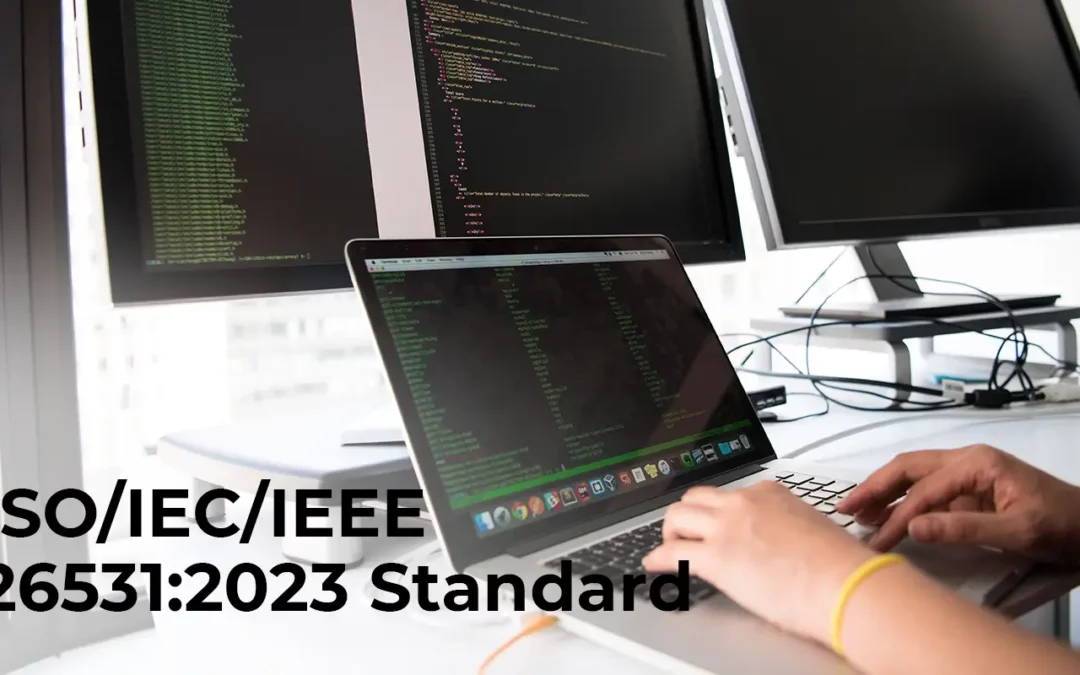WELCOME TO ASCENT EMIRATES
Ascent EMIRATES offers a complete range of ISO certification service solutions, helping businesses achieve compliance, certifications, and competitiveness under international directives and systems. Our tech-savvy service provider experts have ISO processes, and so put in place to render a consistent experience every time. We look forward to partnering with you and aid your association to reach higher levels of quality and efficiency.
ABOUT US
Located in Dubai, UAE, Ascent EMIRATES employs a network of world-class consultants with years of experience and hundreds of successful ISO Certification in UAE projects that go beyond ISO 9001.
We render a broad scope of extensive counseling and strategic consulting administrations that lead to maintainable business excellence. We work intimately with small and large enterprises, understand their strength, deal with their risks through advanced systems, and guarantee business progression through sustainable process improvement.
Our worked-on approach through an integrated excellence model plans organizations to move toward success. Our team has the absolute best industry specialists, able critics, and experienced trainers who all in all work towards empowering your organization to accomplish the best worldwide practices.
We also assist in developing conformity documentation, assisting in troubleshooting management system anomalies, guiding implementation, conducting detailed internal audits, establishing effective corrective action paths, assisting with the entire certification process, etc. We also offer Annual Maintenance of the system, based on the demands of the clients.

ISO & OTHER CERTIFICATIONS
ISO Certification in UAE offered by Ascent EMIRATES include ISO 9001, ISO 14001, ISO 27001, ISO 45001, HACCP, CE Mark, and more.
UAE-based Ascent Emirates is one of the best and most comprehensive certificate providers in Dubai, Ras al-Khaimah, Ajman, Abu Dhabi, Al Ain, and Fujairah. Besides, it has exposure to other Middle East countries like Oman and Saudi Arabia.
Apart from these, we also offer ISO 13485, ISO 45001, HACCP / ISO 22000, ISO 17025, etc. across the UAE. Our team of experienced professionals will guide you through the certification process, providing expert advice, conducting internal audits, and assisting with compliance.
Choose us as your partner for ISO Certification in Abu Dhabi and unlock a world of possibilities. Achieve operational excellence, ensure regulatory compliance, and elevate your organization’s reputation to new heights with excellence and industry-leading standards.
ISO 9001:2015
ISO 9001 specifies requirements for quality management systems (QMS). To ensure consistency in the quality of their products and services, companies can use ISO 9001.
GOST-R
For your local region requirement, GOST-R Certification is a must-to-require asset that help meet technical standards of EASC. Ascent EMIRATES is a privy means to deal with the offer.
FSC
Make sure your product responsibly managed in terms of economic, social, cum environmental benefits. Here is FSC Forest Stewardship Council Certification from Ascent.
ISO 27001:2022
ISO 27001:2022 is an international certification designed to help organizations identify and prevent risks to their information systems.
CE MARKING
In the European Union, CE marking is used to monitor and regulate goods sold. This marking indicates new approach compliance.
UKCA
Have product marking of your country. UKCA Marking certification bring approval of products to be sold in your market-sphere without any fault. Speak to Ascent Today!
ISO 17025:2017
Laboratory competence, impartiality, and consistency requirements are outlined in ISO 17025 and all organizations performing laboratory activities must comply with it.
BIFMA
As part of BIFMA, performance criteria are established that emphasize environmental and social aspects of the supply chain.
ISO 45001:2018
In March 2018, ISO 45001 was published as an ISO standard for occupational health and safety (OHS) management systems, which prevents work-related injuries and illnesses.
Why Choose Ascent for ISO Certification in UAE?
Extensive Experience: With over a decade of experience in the field of ISO certification, we have become the most trusted certification service provider in the major cities of the UAE including Dubai, Abu Dhabi, Sharjah, Ajman, Umm al-Quwain, Ras al-Khaimah, and Fujairah. Our team of highly qualified experts has helped numerous organizations achieve ISO Implementation in UAE.
- Comprehensive Range of Services: We offer a comprehensive range of ISO services tailored to meet the specific needs of our clients. Whether you require ISO 9001 for quality management, ISO 14001 for environmental management, ISO 27001 for information security, or any other ISO standard, we have the expertise to guide you through the certification process.

- Local Knowledge: Our in-depth understanding of the UAE’s business landscape and regulatory requirements gives us a competitive edge in assisting organizations with these certifications. We are well-versed in local laws, cultural nuances, and industry best practices, ensuring that your certification journey is smooth and efficient.
- Tailored Approach: We believe that every organization is unique, and therefore, we adopt a tailored approach to ISO. Our experts work closely with you to understand your business processes, identify areas for improvement, and develop a customized certification plan that aligns with your goals and objectives.
- Cost-Effective Solutions: We understand the importance of cost-effectiveness, especially for small and medium-sized enterprises. Our certification services are designed to provide value for money, offering competitive pricing without compromising on quality. We aim to make ISO Certificate in UAE accessible to organizations of all sizes and budgets.
- Continuous Support: Our commitment to your success extends beyond obtaining the certification. We provide ongoing support and guidance to help you maintain and improve your management systems. Our experts are available to answer your queries, conduct internal audits, and assist with any updates or changes to the ISO standards.
- Time Efficiency: We understand that time is of the essence for businesses. Our streamlined processes and efficient project management ensure that your certificate is achieved within the desired timeframe. We minimize disruptions to your operations, enabling you to focus on running your business while we take care of the certification process.
Global Experience – Regional Expertise
Unlock global success with our unique ISO Certification consulting firm in the UAE! Serving clients in over 50 countries, we offer local ISO experts, round-the-clock support, and unmatched certification services – all at an affordable price range and a quicker timeframe.
ISO Certification in UAE – Dubai, Abu Dhabi, Sharjah, Ajman, Umm al-Quwain, Ras al-Khaimah, and Fujairah
At Ascent EMIRATES, we specialize in directing organizations through the multifaceted course of accomplishing ISO certificates, guaranteeing a continuous journey towards excellence in quality, security, environmental systems, etc. As your devoted consultant specialist management service agency, we are focused on lifting your business higher than ever by lining up with universally recognized standards.

How To Get ISO Certification in UAE?
- Initial Assessment: We start by conducting an initial assessment of your organization’s current practices, processes, and systems to determine the gap between your existing state and ISO requirements. This assessment helps us understand your unique needs and design a customized certification plan.
- Planning and Documentation: Our team of experts works closely with you to develop a comprehensive plan that outlines the necessary steps and timelines for ISO standards. We assist you in documenting your management system, policies, procedures, and other required documentation, ensuring compliance with ISO standards.
- Training and Awareness: We provide training sessions to create awareness among your employees about ISO standards, their importance, and how they relate to their roles and responsibilities. These training programs equip your team with the knowledge and skills required to implement and maintain the ISO management system effectively.
- Implementation Support: Our consultants work hand in hand with your organization, guiding you through the implementation phase. We provide support in establishing the necessary processes, conducting internal audits, and addressing any non-conformities or areas for improvement.
- Certification Audit: We assist you in coordinating with an accredited certification body to conduct the certification audit. Our experts provide guidance and support during the audit, ensuring that all requirements are met and facilitating a smooth audit process.
- Surveillance Audits: As part of the ISO standard requirements, surveillance audits are conducted periodically to assess the ongoing compliance of your organization with the ISO standards. Our team assists you in preparing for these audits, ensuring your continued adherence to the certification requirements.
Requirements to Get ISO Certification in UAE
ISO Training: Adequate ISO training is crucial for understanding the requirements of the chosen ISO standard and effectively implementing them within the organization. Training sessions help employees gain knowledge about ISO principles, processes, and best practices, enabling them to actively participate in the certification journey and contribute to its success. Through comprehensive ISO training, we empower your workforce to become proficient in ISO standards, fostering a culture of quality, compliance, and continuous improvement.
Strategic Consideration: Before pursuing the certification, organizations should strategically consider their objectives, resources, and commitment. This involves assessing the relevance of ISO standards to their industry and identifying how certification aligns with their business goals. Strategic consideration helps ensure that standard will provide tangible benefits and contribute to the organization’s growth and competitiveness.

ISO Implementation: Implementation of ISO standards involves developing and implementing standard operating procedures (SOPs) that document the organization’s processes, controls, and responsibilities. SOPs provide a systematic framework for consistent operations, ensuring compliance with ISO requirements. They serve as a reference for employees, help maintain quality and consistency, and facilitate audits and reviews during the certification process.
By fulfilling these requirements, organizations in the UAE can successfully pursue ISO certification. ISO training empowers employees, strategic consideration aligns certification with business goals, and ISO Implementation in UAE with SOP development ensures compliance and consistency. Ultimately, ISO certification demonstrates an organization’s commitment to excellence, customer satisfaction, and continual improvement – and we can help you achieve these certifications with ease.
Do You Need A Consultation?
Take Your Business To Higher Level With Ascent EMIRATESImprove Your Business with Ascent EMIRATES
If You Need Assistance, Please Do Not Hesitate to Contact Us. You Can Count on Us 24/7.
Want To Be A Part Of Our Team?
Test your innovations to front-end safety with our specialized and expert ISO Certification in UAE, Oman, & Saudi Arabia consultant services. Gain more from our world class compliance services.
Product Specialist
Our product specialists work closely with our internal team to deliver excellent products. You are also responsible for improving sales, identifying opportunities, and recommending improvements in addition to analyzing market trends.
Solution Architect
Solution architects are responsible for designing, describing, and managing solution engineering to match it with specific business problems. Many privacy regulations require businesses to protect customer data. A solution architecture defines how a given software would meet those ISO Certification requirements.
Consultant
The ISO Certificate UAE consultants at Ascent EMIRATES provide expert advice to help clients achieve their business goals through proper certification and training. Assisting clients with ISO Certification in Dubai is the major role of consultants.
Process Analyst
Business process mapping, identifying inefficiencies, and maintaining the flow of information between executives, management teams, and IT professionals are some major job responsibilities of our process analysts.
Auditors
Our auditors verify the accuracy of the records submitted by our partnering companies for certification. It will be your responsibility to ensure that applying clients and companies adhere to the ISO certification guidelines and codes.
LATEST BLOGS
Blog

Social Impacts of Rainforest Alliance Sustainable Agriculture in UAE
What is the effect of obtaining more economically through the Rainforest Alliance certification program? It's an...
News & Event

ISO/IEC/IEEE 26531:2023 International Standard: Systems and Software Engineering
ISO/IEC/IEEE 26531:2023 indicates the requirement for the effective turn of events and the information security...
Project Completed
Active Clients
Consultation
%
Customer Satisfaction
Reach Us
Ascent EMIRATES
Office: Office 1401, Boulevard Plaza Tower One, EMAAR Boulevard, Near “The Dubai Mall”, Opp “Burj Khalifa”, Downtown Dubai, UAE
info@ascentemirates.ae


